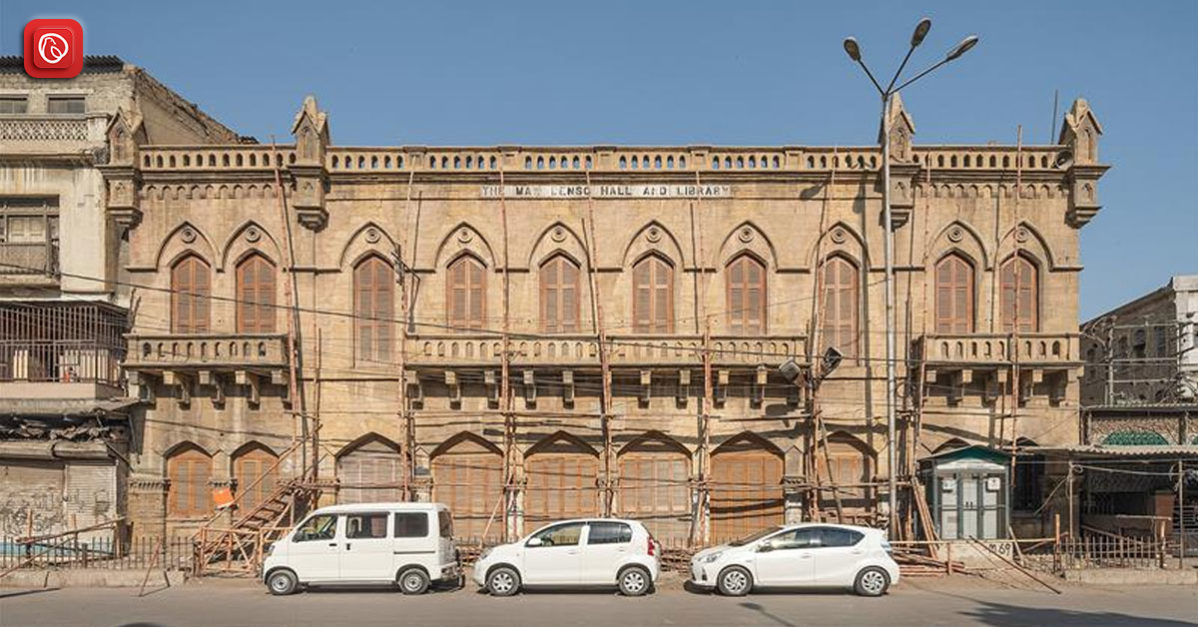The word colonialism itself reflects mightiness and supremacy. In the past, whenever a country was conquered and ruled by another nation, they used their language, culture, and architecture to show their power and dominance in the region.
The colonial style of architecture was created by the combination of architectural styles of the colonizing nation with some regional architectural elements. In the architectural timeline of Pakistan, the colonial style of architecture holds a significant place.
The state of Pakistan has been part of British India, which lasted under British rule for more than a century until its independence in 1947. The British regime brought immense changes to the subcontinent, including contemporary architecture.
Numerous public, administrative and educational buildings were constructed during this time period. With the establishment of the British Raj, the architectural ideals of Europe were introduced to the subcontinent. The buildings were built combining western architectural styles such as baroque, gothic, and neoclassical with Indo-Islamic architectural elements.
The colonial architecture featured an amalgamation of Indo Islamic elements like geometry, calligraphy, and kari-kash with Victorian and neoclassical features such as columns and towers. The local elements were added to make the colonial manifestation blended with the regional context as a continuation of the great Mughal Empire. This architectural style is also known as Indo-Saracenic or Mughal gothic.
It has been 75 years since Pakistan got independence from the British Raj. We still witness numerous colonial buildings in prominent cities like Lahore, Karachi, Rawalpindi, Murree, Multan, and some other cities. These buildings have passed the testaments to time and reflect the glorious past of British Imperialism in the subcontinent. The charismatic beauty of these buildings is a testimony of the finest architects in this period of our history.
Graana.com brings you a list of buildings featuring colonial architecture in Pakistan.
Lahore Museum
Lahore Museum is a majestic red brick colonial building. Located on the Mall road Lahore, the museum was designed by Sir Ganga Ram. The façade of the building has been aesthetically designed and built strong enough to withstand all the years. The building is a profusion of exquisite red sand, stone latticework, small balconies, and domes.
The museum was initially established in 1865-66 on the site which is present-day Tollinton Market. The museum’s present building was built as a memorial to Queen Victoria’s Golden Jubilee and financed through a public fundraiser for this occasion.
The museum’s foundation stone was laid on 3rd February 1890 by Prince Albert Victor, the grandson of Queen Victoria. The present-day building of the museum was designed in syncretic Indo-Saracenic revival architectural style by one of the finest architects of Lahore, Sir Ganga Ram. On the completion of the new building, the museum artifacts were shifted to their present-day building.
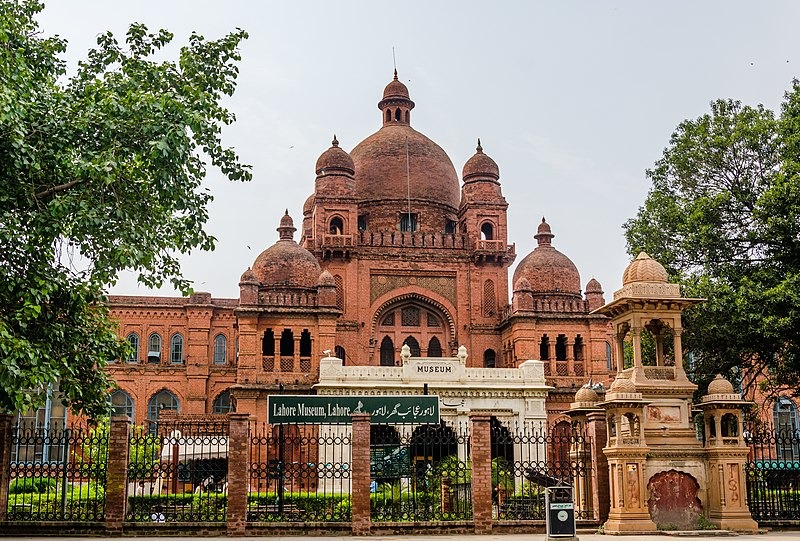
Government College University
Government College University is another significant colonial building in Lahore. It was established in 1877 as Government College by the British Raj; later, in 2002, it acquired the status of a university.
The magnificent building was designed by W. Purdon, Superintendent Engineer, and built under the supervision of Executive Engineer Kannhaiya Lal. The building was designed in Lahori brick with sparing use of black Chiniot stone. Pointed gothic-style arches are a prominent feature of the building.
The building is designed in neo-gothic styles featuring a 176’ high octagonal clock tower as the striking element.
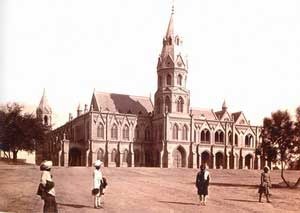
The grandeur of the building is enhanced by placing it on the highest level of the contoured site. The gardens around the building give the campus a sense of openness.
Frere Hall, Karachi
Frere Hall is a masterpiece of colonial heritage in Karachi. The historic structure reflects British Imperialism during the colonial era.
Frere Hall was constructed in 1865 to namesake Henry Bartle Edward Ferer, who played a significant role in the economic flourishment of Karachi. It was originally built as Karachi’s town hall and now presently serves as an exhibition space and library.
This Venetian-Gothic structure was designed by a prominent British army architect, Henry Saint Clair Wilkins. The architecture of the hall features British architectural elements such as flying buttresses, quatrefoils, ribbed vaults, and pointed arches galore.
The walls and columns of the building are adorned with mosaics and relief sculptures. The Hall was built using yellowish limestone, which was sourced from Rajasthan and Thar. Grey and red sandstone are also used in the design sparingly sourced from the Sindhi town of Jungshahi.
The surrounding lush green gardens complement the Venetian structure beautifully. They were formerly known as King’s and Queen’s Lawn. However, after the independence, they were renamed as Bagh-e-Jinnah or Jinnah Gardens.
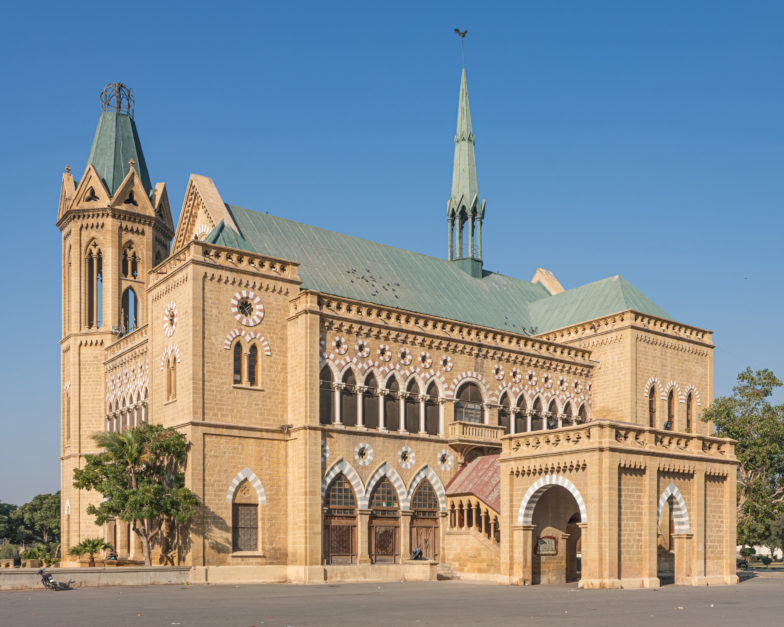
Chief Minister House Nathiagali
The chief minister’s house, also known as the KPK House, is a colonial heritage building. It was built in the late 1800s as an official residency of the chief minister. The building is located amidst lush green mountains and dense pine trees in the scenic environment of the Galiyat region.
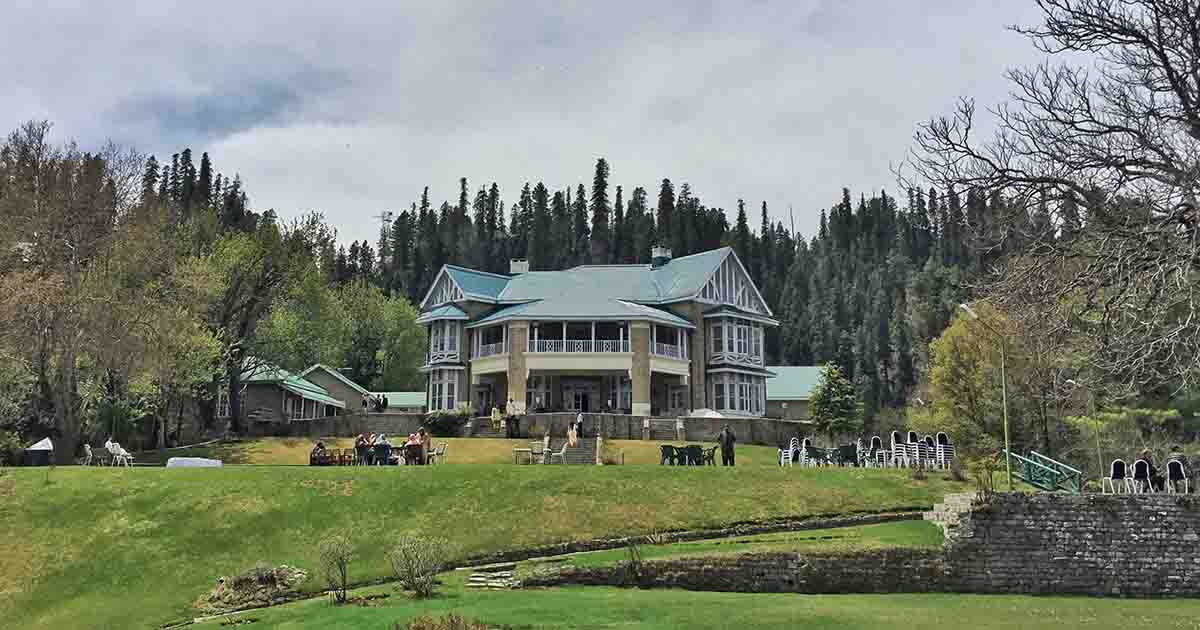
The charismatic English Villa offers to reminisce the British colonial period. The building welcomes visitors with brick flooring, which enters white marbled flooring throughout the veranda. The building embodies British architectural features like a wooden pitch gamble roof supported by narrow 6’’wooden columns.
Amid new construction techniques and modern building styles, the colonial buildings have withstood the passage of time, and their legacy is still seen often recognizable by their state of neglect.
These buildings narrate the stories of their glorious past during the British Raj in the subcontinent. Many architectural gems are crumbling or in a state of threat. We as a nation should pay attention to preserving these heritage sites as our great history is reflected in these architectural monuments.
For more information, visit Graana blog.



